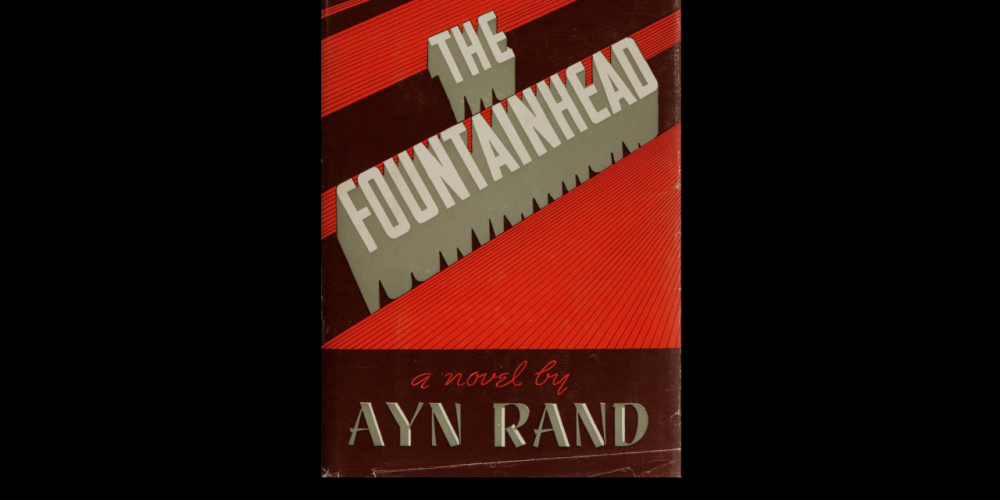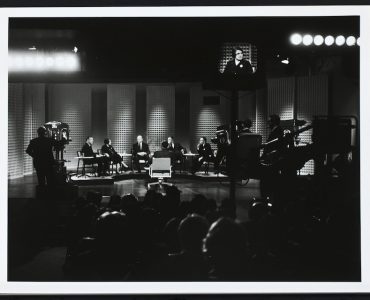Ayn Rand’s first bestseller, The Fountainhead, tells the story of Howard Roark, an individualistic architect whose revolutionary designs put him in conflict with the society of his time. This inspiring tale has now sold over eight million copies in thirty-plus languages, but less well-known is the story of how the novel was published. It was a years-long struggle that parallels Roark’s journey from obscurity to greatness.
When Rand began writing her first notes for The Fountainhead in 1935, she had already endured considerable financial and personal hardship. Nearly a decade earlier, Rand had fled the Soviet Union and arrived in America, dreaming of writing fiction that projected her vision of an ideal man.
To make money, she worked at various times as a movie extra, a waitress, and a filing clerk. Life for Rand and her husband, Frank O’Connor, was difficult in Depression-era America. In biographical interviews, now preserved in the Ayn Rand Archives, Rand recalled a day when they had no food in their apartment except oatmeal. Royalties from her first novel, We the Living, dried up because the publisher allowed it to go out of print after selling all three thousand copies.
Rand later remarked that if The Fountainhead didn’t make her famous, she would have to find some kind of day job and write only at night, without hope of commercial success in her lifetime. After finishing the first third of the novel, Rand hoped to secure a $1,200 advance from a publisher — enough to live on for a year while writing full time.
Twelve publishers rejected The Fountainhead. An editor from Little Brown evaluated the novel as “high-grade literature” and a work of “almost genius,” but said it was too intellectual, too controversial, and would not sell. Rand later recalled, “If somebody like Simon and Schuster tells me it’s a bad novel, much as I would disagree . . . it is still within the morally proper. . . . But to have it rejected because it’s too good, that was really a feeling of horror.” In despair, she considered abandoning the novel, but during an hours-long overnight discussion with Frank, she resolved to continue.
Rand fought tirelessly, representing the novel herself after parting ways with her literary agent. Eventually, she obtained a $1,000 advance from Bobbs-Merrill, an Indianapolis-based publisher. Rand devoted a full year to finishing the novel, and The Fountainhead was published in May 1943. But government paper rationing during World War II limited the number of copies that could be printed.
Sales were slow during that first summer, and with Bobbs-Merrill issuing small editions that were constantly going out of print, it looked like The Fountainhead might suffer a fate similar to We the Living. But through word of mouth, the novel reached Rand’s “kind of readers” — those whom she judged as “the right minds.”
'Rand, like her character Howard Roark, persevered through hardships, confident that the right kind of people would recognize the value of her work.' Share on XMore than two years after publication, The Fountainhead achieved bestseller status. And in a spectacular turn of fortune, Rand sold the novel’s film rights to Warner Brothers for $50,000 (nearly a million dollars in today’s money). The contract provided that Rand would write the screenplay herself. To be closer to Hollywood, the O’Connors moved from their New York City apartment to a thirteen-and-a-half-acre estate in the San Fernando Valley. The following year, Rand signed a deal to write screenplays for producer Hall Wallis, providing both financial security and six months out of every year to work on her own projects.
Rand, like her character Howard Roark, persevered through hardships, confident that the right kind of people would recognize the value of her work. As she wrote in the introduction to the novel’s 1968 edition, “I knew only that it was a book that ought to live. It did. . . . I knew it while The Fountainhead was being rejected by twelve publishers. . . . I mention it here for the sake of any other writer of my kind who might have to face the same battle—as a reminder of the fact that it can be done.”
Image credit: Bobbs-Merrill Co. (Ayn Rand Archives).







